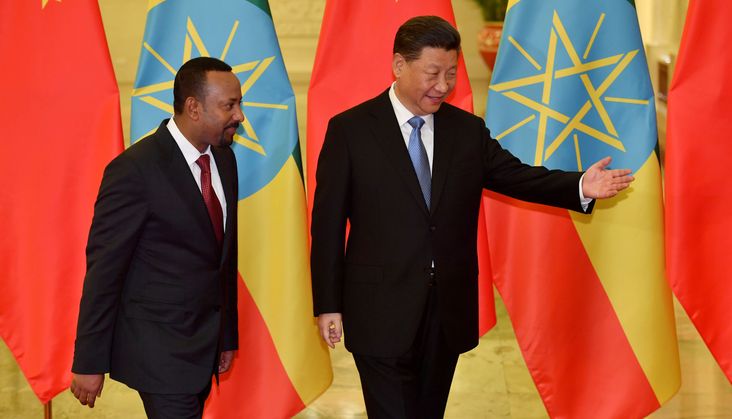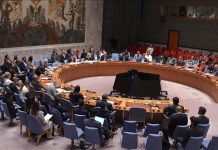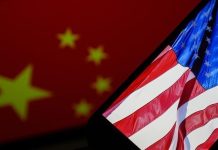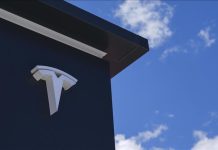LEADERS of Ethiopia and Kenya were in Beijing last week seeking to deepen cooperation with China at the second Belt and Road Summit in Beijing, while the Asian giant tried to find ways to rebrand its global development model .
The leaders of the two largest economies in Eastern Africa, Ethiopia and Kenya, were in Beijing as the capital hosts China’s ‘most important diplomatic event,’ the second Belt and Road Summit. Ethiopia’s Prime Minister Abiy Ahmed has been chronicling his trip on his Twitter account, listing meetings and deals he’s signed in the days leading up to the summit.
For him, the immediate concern is the state of Ethiopia’s indebtedness to China, and guaranteeing continued investments to boost the countries economic prospects.
At a meeting with China Railway Construction Company (CRCC), the Prime Minister said, the company “expressed interest in investing in agro-industry parks development, oil and gas development and the Beautifying Sheger River Project”.
In a bid to solve Ethiopia’s power problems, which have hampered the new Addis-Djibouti railway and other projects, Prime Minister Ahmed signed a $1.8bn deal with the State Grid Corporation of China.
The deal will cover transmission and distribution lines to cities, 16 industrial parks, and the railway. Ahmed also met his host President Xi Jinping, a meeting where he said he sought to strengthen the Comprehensive Strategic Partnership which has, among other things, set the ball rolling for debt restructuring.
One of the telling meetings on Abiy Ahmed’s plate was with executives from the China Export and Credit Insurance Corporation (Sinosure). Sinosure has been vocal on the losses it is making from Ethiopia’s new railway, using it as an example of the risky investments Chinese companies are involved in developing nations.
Kenya’s President, Uhuru Kenyatta, was also in Beijing where he sought a KSh368bn ($3.6bn) loan to build the standard gauge railway stretch from Naivasha to the lakeside city of Kisumu.
The presence of his rivalturned- friend, opposition leader Raila Odinga, suggests the Kenyan government intends to put up a united political front.
Their rapprochement has given Kenyatta much-needed peace on the political front, where Odinga was a fierce critic of Kenya’s heavy borrowing.
President Kenyatta has met the International Monetary Fund’s Managing Director Christine Lagarde, who posted after the meeting that they discussed “Kenya’s economic priorities and how the Fund can support them.”
China’s new ambassador to Kenya, Wu Peng, wrote an opinion piece in The Daily Nation on 23 April extolling China’s relationship with Kenya and listing its successes.
Political stability is, however, just one of China’s many growing concerns since the launch of the Belt & Road Initiative (BRI).
The initiative has come under sharp criticism for what critics see as ‘debt diplomacy’ and an economic route to political might.
The problem, for China, is that while it is too invested in economies such as Ethiopia and Kenya to make any drastic changes, it has to find ways to rebrand its global development model.
Among the host of changes expected from the second summit was a draft of rules for which projects can use the BRI brand.
These rules may affect funding for certain projects, and its likely to be followed by a global rebranding effort to save perception of the BRI.







